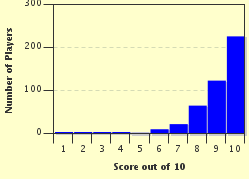Quiz Answer Key and Fun Facts
1. What is the name of this 15th century instrument, formerly known as a sackbut, which represents the harmonic foundation of the big bands and uses a sliding tube to alter its range?
2. Which 'skinned' instrument, that forms part of the big bands rhythm section, has a strong connection with both war and dance and carries such components as tom-toms, snare and bass?
3. This big band instrument has a peg-box, finger-board, bridge and chin-rest. What is this apparatus that also has four strings and was the instrument of choice of Stephane Grapelli?
4. Which instrument, the lowest pitched of the violin family, is used in big bands to show the harmonic progression of the chord changes?
5. This instrument is regarded as the star of the big bands. It is made up of a long, narrow brass tube that folds back in on itself and generally comes equipped with three valves. What is this musician's tool that includes the flugelhorn and cornet within its family?
6. What is the name of this percussion instrument that is made up of a series of metal bars suspended on cords that are struck by mallets and produce sounds that resonate like organ pipes through vertical tubes?
7. A vital member of the rhythm section of a big band what is this instrument that represents the band's heartbeat and is probably better known as a six string?
8. Branded early on as a novelty instrument it developed such a strong solo identity that it nearly upstaged the trumpet as the primary jazz instrument. What is this tool that was created by Adolphe Sax in 1846 for military bands?
9. Which member of the rhythm section, favoured by the likes of Duke Ellington and Count Basie, creates notes by having rebounding hammers, activated by keys strike against strings?
10. Which long, single reed woodwind instrument, that shone in the hands of virtuoso band leaders such as Benny Goodman and Artie Shaw, is informally referred to as 'the liquorice stick'?
Source: Author
pollucci19
This quiz was reviewed by FunTrivia editor
ralzzz before going online.
Any errors found in FunTrivia content are routinely corrected through our feedback system.

